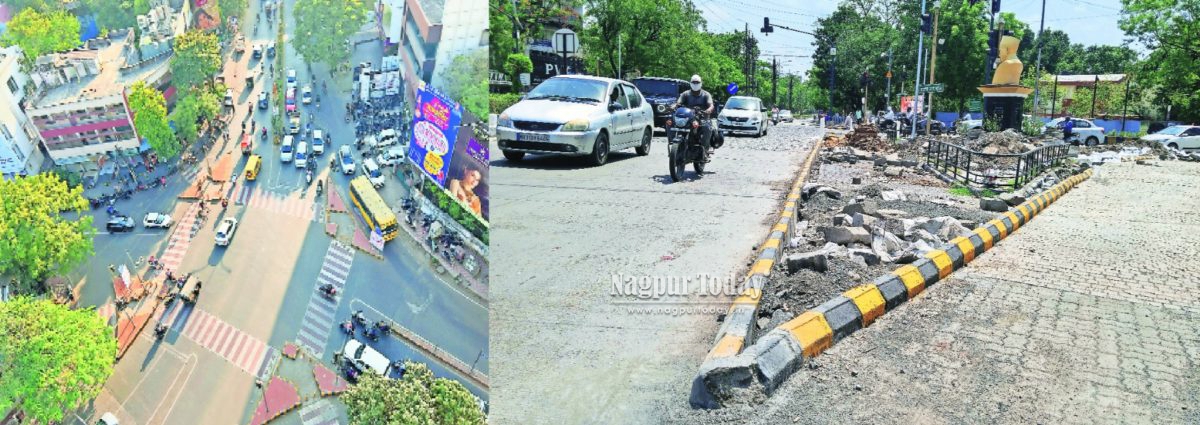
Nagpur: In a major push to decongest city roads and enhance pedestrian safety, the Nagpur Municipal Corporation (NMC) has launched a city-wide initiative to redesign traffic islands at 12 busy junctions. The Rs 1.5 crore project aims to address longstanding issues of signal jumping, erratic turns, and unsafe pedestrian crossings that have plagued Nagpur’s traffic system for years.
The redesigned islands are engineered to optimise road space usage, streamline vehicle flow, and create safer zones for pedestrians — without compromising the road’s carriageway width. According to NMC officials, the new traffic islands are not encroaching upon the driving lanes but are instead utilising excess spaces previously misused by unruly motorists.
Smarter designs for safer roads
“Earlier islands failed to regulate traffic or provide any real safety for pedestrians,” said Rahul Deshmukh, Deputy Engineer (Civil), NMC. “With the new design, we’re ensuring better traffic discipline while giving pedestrians clear, safe pathways across junctions.”
Key features of the redesigned islands include:
• Extended stop lines to discourage signal jumping
• Optimised turning radii for smoother vehicle navigation
• Dedicated free-left lanes for uninterrupted, controlled left turns
• Refuge areas and stage-wise crossing zones for pedestrian safety
Deshmukh clarified that contrary to public concerns, the redesigns do not reduce drivable space. “We’re just reclaiming and formalising the portions of the road already being misused for illegal manoeuvres,” he added.
Collaboration with Traffic Police
One of the standout aspects of the project has been its coordination with Nagpur’s traffic police. Officials from NMC and area traffic inspectors conducted joint site visits before finalising the designs. This has helped tailor each junction’s redesign to on-ground traffic realities, making the plan practical and immediately impactful.
Pilot project success at Shraddhanandpeth Square
The redesigned island at Shraddhanandpeth Square has already emerged as a proof-of-concept. Initially met with scepticism by local commuters and shopkeepers, the square has now seen improved traffic discipline, reduced signal violations, and safer pedestrian crossings.
“People were unsure at first, but the results speak for themselves,” said a local traffic officer. “We’re already seeing smoother vehicular movement and less chaos during peak hours.”
Model for other cities
As work continues at other key junctions, the NMC’s data-driven, safety-focused redesign could serve as a model for mid-sized Indian cities facing similar urban traffic challenges. If the initial results hold steady, Nagpur’s upgraded traffic islands may soon become an urban planning success story with national relevance.















